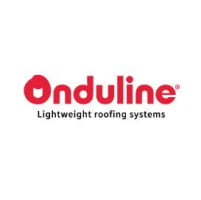-
Philippines
Copyright © 2025 Powered by BCI Media Group Pty Ltd
Confirm Submission
Are you sure want to adding all Products to your Library?
Contact Detail

Lightweight offers numerous other advantages. Learn more below!
When it comes to roofing solutions, the term "lightweight" might raise concerns for some people. The common misconception is that lightweight materials are synonymous with fragility and a compromise in durability. However, this couldn't be further from the truth. In fact, they often bring several advantages to the table.
Thanks to cellulose fibres, ONDULINE sheets are lightweight and flexible. Advancements in materials science and engineering have led to the development of lightweight materials that are lightweight yet robust. Think of wood, the source of cellulose itself! Trees or plants can bend wind without failing, resisting and flourishing for decades. Boat hull, ski & surf, tennis rackets, bike frames, wind turbines, plywood… Many light materials require strong mechanical resistance combined with the lowest possible weight (EDS N°3, 2021).
ONDULINE sheets are engineered to have a good strength-to-weight ratio. They distribute the weight effectively and reduce the strain on the underlying structure. They only weight 3,16 kg/m² (Environmental Product Declaration Bitumen sheets 2016).1
1 Weight of bitumen sheets vary depending on the products from the lowest, 2,7 kg/m² (ONDULINE EASYFIX® COMPACT,…) to the highest, 4,72 kg/m² (ONDULINE® MAIS).

Lightweight roofing materials are inherently lighter compared to traditional roofing solutions like concrete, fiber cement or clay tiles.
Lightweight roofing like ONDULINE sheets allow for reduced structural load which benefits construction projects in various ways:
Using ONDULINE® sheets in a construction project may contribute to reduce the carbon footprint as the transportation of lightweight roofing materials to the construction site is often more straightforward and cost-effective compared to heavy roofing materials.
Lower freight cost:
Our lightweight solutions permit to put around 420 units on a pallet. This represents 798 m². Freight costs are reduced because we load more m² per truck and so, environmental footprint is lower.
If we take the exemple of a full truck (14 tons), our lightweight solutions definitely allow us to put more m² in a truck reducing carbon footprint with an impressive 3800 m2 load capacity.



